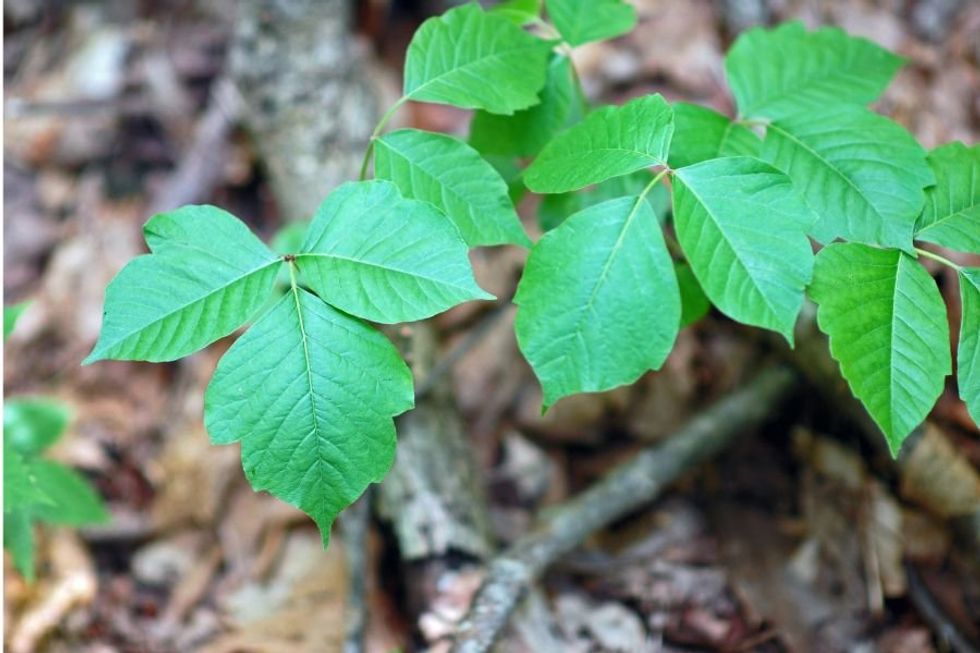Poison ivy, with its notorious three-leaf configuration, can cause itching, blisters, and discomfort when it comes into contact with the skin.
The toxic oil, called urushiol, found in poison ivy leaves, stems, and roots, is responsible for triggering an allergic reaction in many individuals.
While over-the-counter remedies are available, there are natural alternatives that can help alleviate the symptoms and speed up the healing process.
In this blog post, we will explore effective methods to get rid of poison ivy naturally, allowing you to find relief without resorting to harsh chemicals.
Identifying Poison Ivy and Understanding Its Effects
Before delving into natural remedies, it's crucial to identify poison ivy accurately and comprehend the effects it can have on the body.
Poison ivy usually grows in the form of a low shrub or a climbing vine, with each leaf consisting of three leaflets.
When the skin comes into contact with urushiol, it binds to proteins, triggering an immune response that can manifest as redness, swelling, blisters, and intense itching.
Immediate Steps to Minimize Exposure
If you suspect you've come into contact with poison ivy, quick action can help minimize the severity of the allergic reaction. Here are a few steps you can take immediately:
Wash the Affected Area: Use mild soap and lukewarm water to gently wash the exposed skin. This will help remove the urushiol oil, reducing the chances of it spreading to other parts of your body.
Cleanse Clothing and Tools: Ensure that any clothing, gardening tools, or equipment that may have come into contact with poison ivy is thoroughly washed. Urushiol can linger on surfaces and continue to cause reactions.
Natural Remedies to Relieve Symptoms
Nature offers a range of remedies that can soothe the discomfort caused by poison ivy and aid in healing. Here are a few effective natural remedies:
Cold Compresses: Applying a cold compress to the affected area can help reduce inflammation and provide temporary relief from itching. Wrap ice cubes in a cloth or use a cold gel pack for 10-15 minutes several times a day.
Oatmeal Baths: Oatmeal has anti-inflammatory properties and can help relieve itching. Add colloidal oatmeal to lukewarm bathwater and soak for 15-20 minutes. Pat your skin dry gently after the bath to avoid further irritation.
Essential Oil Blend: You can also user essential oils for Poison Ivy relief. Some essential oils, such as tea tree oil, possess anti-inflammatory and antimicrobial properties that can help soothe poison ivy symptoms. Dilute a few drops of tea tree oil in a carrier oil, such as coconut oil or jojoba oil, and apply it to the affected area. Remember to perform a patch test first to ensure you don't have any adverse reactions to the oil.
Calming the Itch with Herbal Solutions
Herbal remedies have long been utilized for their soothing properties. Here are two herbs that can help alleviate the itching caused by poison ivy:
Aloe Vera: The gel extracted from aloe vera leaves has cooling and anti-inflammatory properties that can reduce itching and promote healing. Apply pure aloe vera gel to the affected area several times a day for relief.
Witch Hazel: Witch hazel is a natural astringent that can help dry out blisters caused by poison ivy. Apply witch hazel extract to the affected area using a cotton pad or cloth a few times daily.
Promoting Healing with Homeopathic Approaches
Homeopathic remedies aim to stimulate the body's natural healing abilities. Here are two popular homeopathic options for treating poison ivy:
Rhus Toxicodendron: This homeopathic remedy is derived from poison ivy and is used to relieve symptoms such as itching, swelling, and redness. Follow the recommended dosage instructions or consult a homeopathic practitioner for personalized advice.
Jewelweed: Also known as touch-me-not, jewelweed is a common natural remedy for poison ivy due to its alleged anti-inflammatory properties. Crush the leaves and stems to extract the juice, then apply it to the affected area as needed.
Preventive Measures for Future Encounters
To avoid future encounters with poison ivy, it's essential to take preventive measures:
Learn to Recognize Poison Ivy: Familiarize yourself with the appearance of poison ivy to avoid accidental contact. Remember the old adage, "Leaves of three, let it be."
Wear Protective Clothing: When working in areas where poison ivy is prevalent, cover your skin with long sleeves, pants, and gloves. This will act as a barrier between your skin and the plant's urushiol oil.
Final Words:
While poison ivy can be a bothersome and uncomfortable experience, natural remedies provide a gentler alternative to chemical-laden treatments.
By promptly identifying and treating poison ivy exposure, you can reduce the severity of the allergic reaction and alleviate the associated symptoms.
Incorporating these natural remedies into your routine can help you find relief and promote the healing process, allowing you to enjoy the great outdoors without the fear of poison ivy's itchy consequences.











































